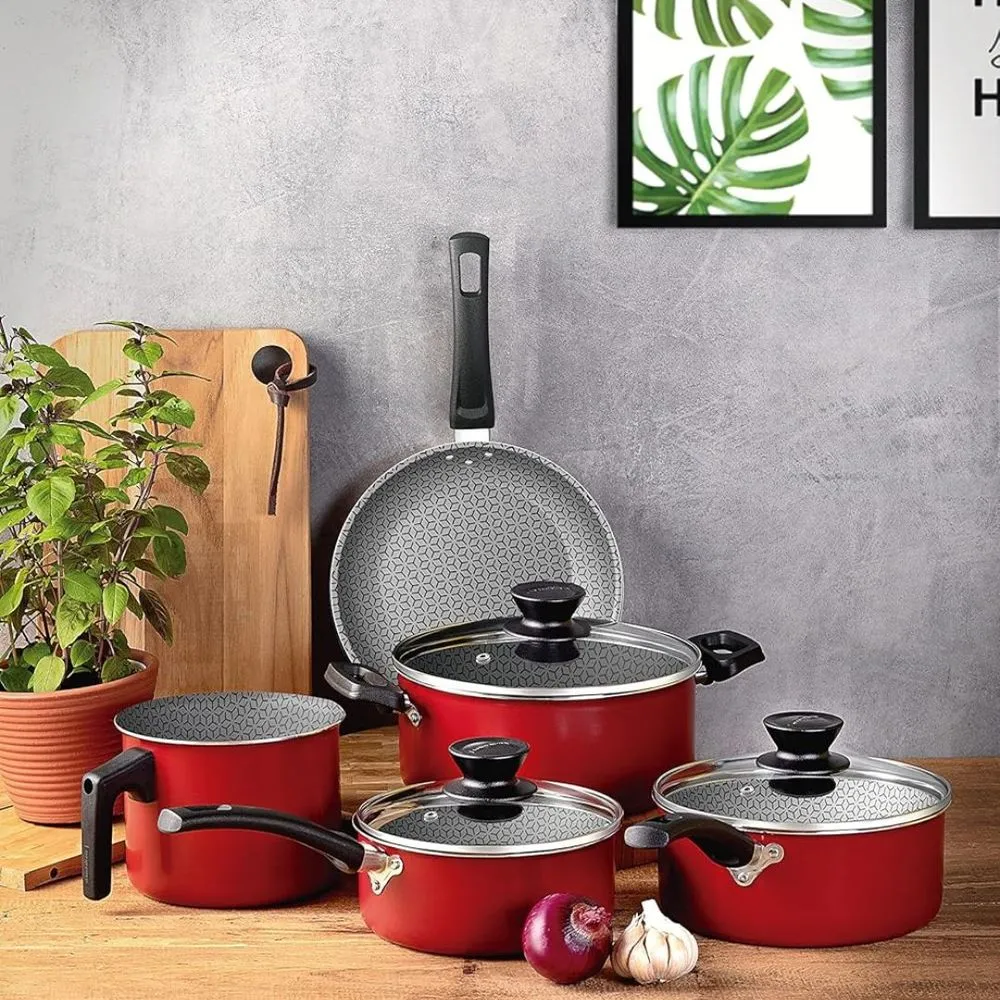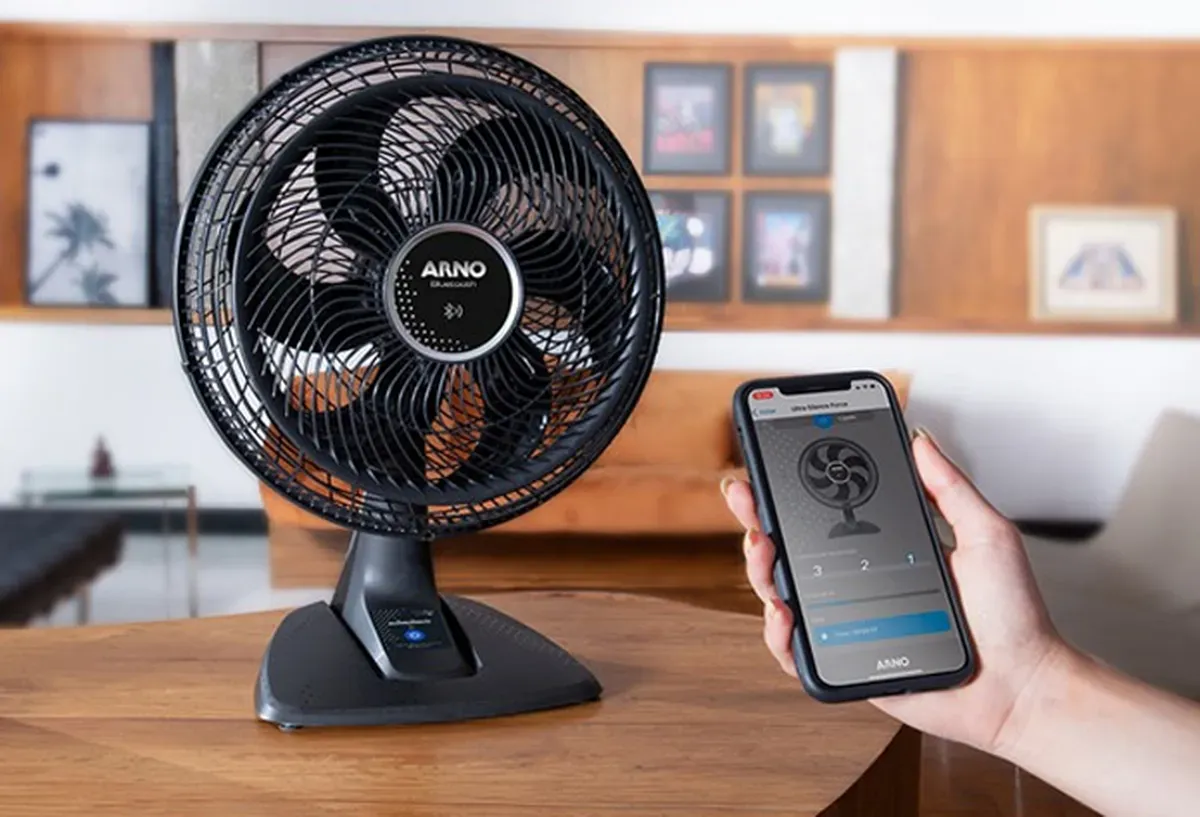Difference Between Robot and Traditional Vacuum Cleaners: Which Is Better?
Discover the key differences between robot and traditional vacuum cleaners. Complete analysis of prices, pros, cons, and which to choose for your home in 2025.
Thinking about ditching the broom for a vacuum cleaner, but can't decide between a robot vacuum or a traditional one? You're definitely not alone in this dilemma! With so many options on the market, from basic $50 models to smart robots costing $2,000+, the decision can feel overwhelming.
Over the past few years, I've tested dozens of vacuum models - both traditional and robotic - and I can guarantee you one thing: there's no one-size-fits-all answer. The best choice depends on your lifestyle, home type, budget, and most importantly, your expectations about cleaning.
In this comprehensive guide, I'll show you the key differences between robot and traditional vacuum cleaners, analyze the pros and cons of each type, and help you figure out which makes more sense for your situation. Get ready to make a well-informed decision!
Table of Contents
- What Are Traditional Vacuum Cleaners
- What Are Robot Vacuum Cleaners
- Head-to-Head Comparison: Traditional vs Robot
- Power and Cleaning Efficiency
- Autonomy and Convenience
- Cost-Effectiveness and Pricing
- Which Type Is Better for Your Home
- Maintenance and Durability
- Which to Choose: Decision Guide
What Are Traditional Vacuum Cleaners
Traditional vacuum cleaners are those familiar models we all know. They fall into three main categories: canister, upright, and handheld. Each type has its own characteristics and specific uses.
Canister Vacuums
Canister models are the most traditional and powerful. They sit on the floor while you pull them around via a flexible hose. They're ideal for heavy-duty cleaning and large spaces, as they typically have greater storage capacity (up to 1 gallon) and superior power.
For versatile cleaning needs, models like the Shark Navigator Lift Away offer excellent performance and versatility for various home sizes.
Upright Vacuums
Upright vacuums have gained significant popularity in recent years for being more ergonomic and user-friendly. They reduce physical strain since you don't need to bend over as much, and many models offer 2-in-1 functionality - a regular upright vacuum plus a removable handheld unit.
Models like the Shark Rocket Deluxe Pro are excellent for most American homes, especially those with a mix of hardwood floors and carpeting that's common in suburban houses.
Handheld Vacuums
Handheld vacuums are compact and ideal for specific cleaning tasks: upholstery, curtains, car interiors, tables, and countertops. They don't replace a main vacuum but are excellent as supplements.
The Bissell Featherweight Stick is a great example of a lightweight option that can handle quick cleanups efficiently.
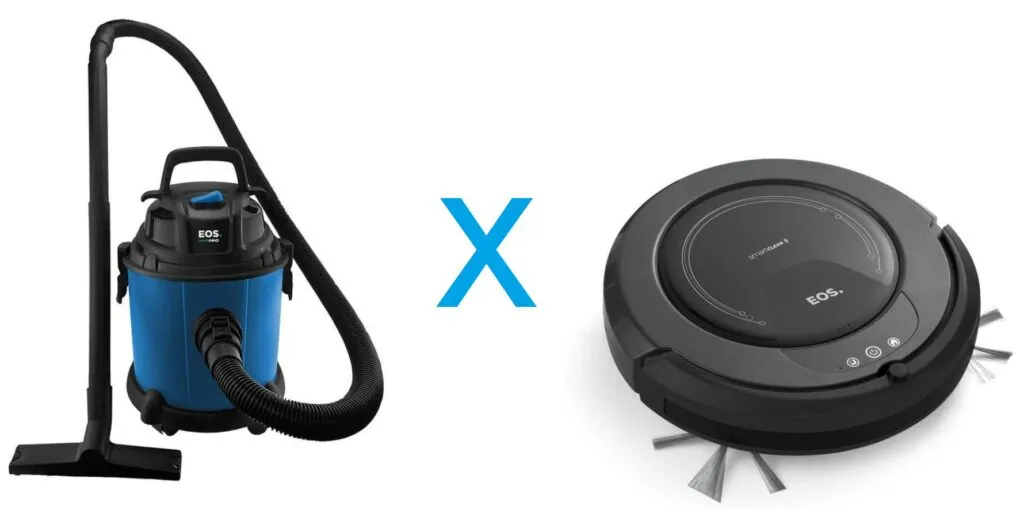
What Are Robot Vacuum Cleaners
Robot vacuums represent the technological evolution in home cleaning. They're small autonomous devices that navigate through your house independently, vacuuming floors without requiring human intervention.
How They Work
Robot vacuums use smart sensors to map the environment, avoid obstacles, and detect dirt. More advanced models create 3D maps of your home and allow you to schedule specific times and areas for cleaning.
Types of Sensors
- Obstacle sensors: Prevent collisions with furniture
- Cliff sensors: Prevent falls down stairs
- Dirt sensors: Detect areas needing extra attention
- LIDAR: Create precise environment maps (premium models)
Connectivity and Intelligence
Modern models offer smartphone app control, scheduling capabilities, and even integration with voice assistants like Alexa and Google Home. Some advanced robots are compatible with smart home systems and offer features like targeted cleaning and automatic return to base.
If you're interested in creating a fully automated home environment, you might also want to explore smart home devices that can work together with your robot vacuum for ultimate convenience.
Head-to-Head Comparison: Traditional vs Robot
Now let's get to what matters: what's the real difference between these two types of vacuum cleaners? I've prepared a detailed analysis of the main aspects you should consider.
Noise Level
One of the biggest differences is noise. Traditional vacuum cleaners can reach 94dB - a pretty high level that can disturb neighbors and family members. Robot vacuums, on the other hand, operate in the 60-68dB range, making them much quieter.
In practical terms, this means you can let the robot run while you work from home, watch TV, or even during the night without major disturbances.
Coverage Area
Traditional vacuum cleaners have greater vertical reach - they can clean from floor to curtains and ceilings. However, they have limitations accessing low and tight spaces.
Robot vacuums, on the other hand, are specialists in hard-to-reach areas. At just 3-4 inches tall, they go under beds, sofas, and furniture where you probably never managed to clean properly with a regular vacuum.
Flexibility of Use
Here traditional vacuum cleaners have the advantage. They clean multiple surfaces: floors, carpets, upholstery, curtains, and even car interiors. Many models also handle liquids.
Robots are more limited - they focus mainly on hard floors and low-pile carpets. Some advanced models also mop, but still have less versatility overall.
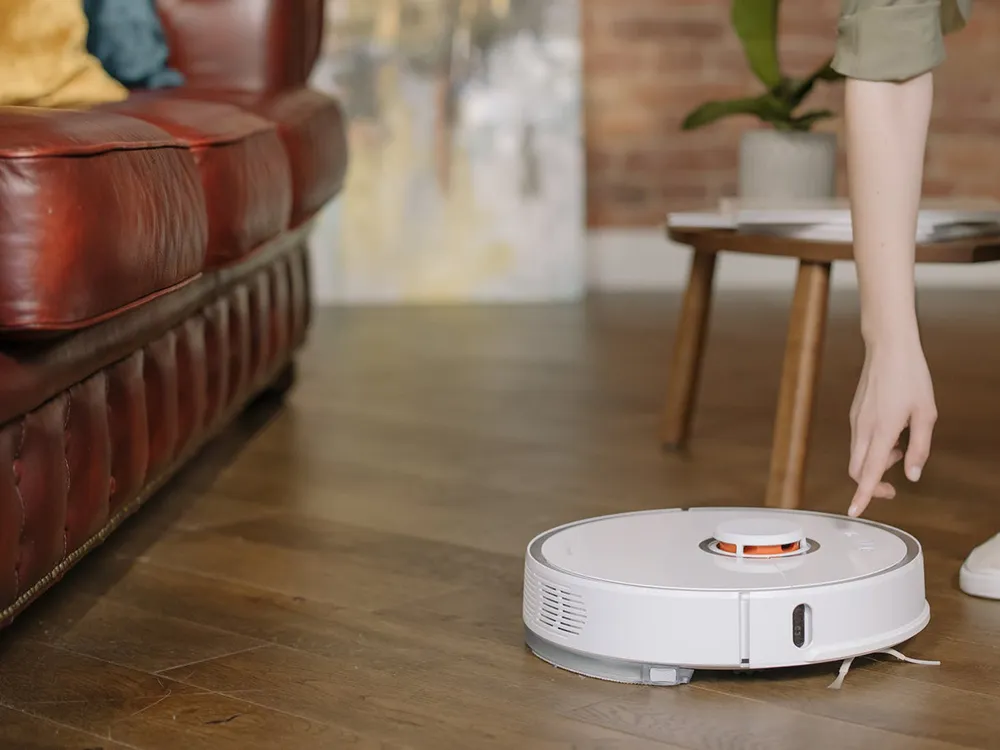
Power and Cleaning Efficiency
When we talk about suction power, traditional vacuum cleaners still reign supreme. They can remove heavy dirt, larger debris, and pet hair much more efficiently.
Traditional Vacuums: Brute Force
Traditional models, especially canisters, work with powers between 1,000W and 1,600W. This power is essential for:
- Removing embedded dirt from carpets
- Sucking up pet hair stuck to upholstery
- Cleaning larger debris like crumbs and dirt
- Vacuuming liquids (wet/dry models)
Robots: Consistent vs Intensive Cleaning
Robot vacuums work with lower powers (typically 20-40W), but compensate with frequency and consistency. Instead of one intense weekly cleaning, they do light daily cleanings.
In practice, a house cleaned by a robot daily can be cleaner than a house vacuumed intensively once a week. Dirt doesn't have time to accumulate.
Efficiency with Different Types of Dirt
For dust and lint: Tie - both are efficient
For pet hair: Advantage to traditional
For large debris: Clear advantage to traditional
For preventive cleaning: Advantage to robots
For embedded dirt: Traditional wins easily
Autonomy and Convenience
Here we reach the robot's major differentiator: autonomy. It's impressive how this feature can transform your cleaning routine.
The Autonomous Cleaning Revolution
With a robot vacuum, you can schedule cleaning to happen every day at 10 AM, for example. You leave for work and come home to a clean house, without dedicating even a minute of your time to it.
Modern models allow complete programming and automatic return to charging base. Imagine the freedom of never having to worry about basic floor cleaning again!
Traditional Vacuum Limitations
Traditional vacuum cleaners require your time and energy. You need to:
- Take the device out of storage
- Plug it in
- Drag it around the house (weighing 7-18 lbs)
- Maneuver around furniture
- Change attachments for different surfaces
- Put everything away afterward
Real-World Usage Scenario
Family with busy schedule: Robot vacuum wins easily. Program once and forget.
Person who likes controlling the cleaning: Traditional vacuum offers more satisfaction, as you see immediate results.
Home with small children: Robot is perfect for keeping floors always clean, especially important when little ones are crawling around.
For families looking to maintain a completely organized home environment, you might also be interested in learning about keeping your kitchen spotless.
Cost-Effectiveness and Pricing
Let's talk money - a decisive factor for many people. Prices vary dramatically in both categories, and cost-effectiveness depends heavily on your usage profile. For those looking to save money on utilities too, check out our guide on LED lighting to reduce household expenses even further.
Traditional Vacuum Prices
Basic Category ($50 - $150):
- Simple models, lower power
- Models like the Bissell Featherweight Stick
- Ideal for small apartments
- Good option for tight budgets
Intermediate Category ($150 - $400):
- Good power and extra features
- Options like the LEVOIT Cordless Vacuum
- Best value for most homes
- Reliable performance for regular use
Premium Category ($400 - $800+):
- Maximum power and versatility
- Models such as the Shark Navigator Lift Away
- Wet/dry models
- For professional-level cleaning
Robot Vacuum Prices
Entry Level ($200 - $500):
- Basic but efficient functionality
- Great entry point for robots
- Perfect for trying the technology
Intermediate ($500 - $1,200):
- Mapping, advanced programming
- Wi-Fi connectivity
- Best cost-benefit ratio
Premium ($1,200 - $2,500+):
- Artificial intelligence
- Self-cleaning base
- Professional features
For those setting up a home office who want to maintain cleanliness while working, consider pairing your vacuum choice with quality home office desks and ergonomic chairs for a complete workspace solution.
Cost Per Use Analysis
Traditional Vacuum $250:
- Lifespan: 5-8 years
- Average use: 2x per week
- Cost per use: ~$0.60
Robot Vacuum $800:
- Lifespan: 3-5 years
- Use: 7x per week (daily)
- Cost per use: ~$0.85
When we calculate per use, the difference isn't as large as it initially appears.
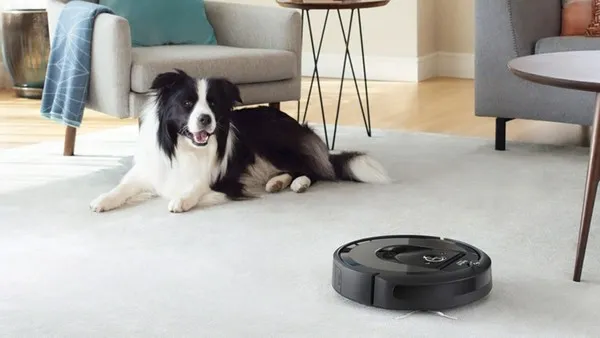
Which Type Is Better for Your Home
Your home's architecture and size directly influence the ideal choice. Let me help you identify which suits your living space better.
Small Apartments (up to 750 sq ft)
Winner: Robot Vacuum
In smaller apartments, robots shine. Storage space is limited for a large vacuum, the area is easily covered by the robot's battery, and convenience pays off big time. Daily automated cleaning keeps the environment always spotless.
Medium Homes (750-1,500 sq ft)
Technical Tie
Here the choice depends more on your profile. If you have a busy routine, the robot will make your life much easier. If you prefer total control over cleaning and don't mind dedicating time, the traditional vacuum might be more efficient.
Large Homes (1,500 sq ft+) and Multi-Story Houses
Advantage: Traditional Vacuum
In very large homes, robots may have battery and cleaning time limitations. Traditional vacuums are more efficient for covering large areas quickly. Additionally, multi-story homes with many stairs favor traditional models.
Homes with Many Rugs and Carpets
Winner: Traditional Vacuum
If your home has thick carpets or high-pile rugs, you'll need the extra power of a traditional vacuum. Robots work well on low-pile rugs but can't achieve the same efficiency on more complex surfaces.
Homes with Pets
Mixed Situation
For loose daily hair: robot vacuum is perfect For hair stuck to upholstery: traditional vacuum is essential Ideal: have both (robot for maintenance + traditional for deep cleaning)
Pet owners might also be interested in keeping bathrooms fresh and clean, since pets often track dirt throughout the house.
Maintenance and Durability
Maintenance is an aspect many people forget to consider, but it can make a big difference in total ownership cost and product satisfaction.
Traditional Vacuum Maintenance
Positive Points:
- Simpler and more robust structure
- Replacement parts generally cheaper
- Washable filters in most models
- Greater durability (5-8 years average)
Necessary Care:
- Regular filter cleaning
- Checking for hose obstructions
- Care with electrical cord
- Cleaning the dust compartment
Robot Vacuum Maintenance
Positive Points:
- Some tasks are automated
- High-quality HEPA filters
- Maintenance alerts via app
Necessary Care:
- Frequent brush cleaning (hair can tangle)
- Battery maintenance (charge cycles)
- Sensor cleaning
- Regular compartment emptying (smaller capacity)
- Possible software updates
Durability Comparison
Traditional Vacuums:
- Lifespan: 5-8 years
- More mature technology
- Fewer electronic components to fail
Robot Vacuums:
- Lifespan: 3-5 years
- More technology = more failure points
- Battery needs replacement (2-3 years)
Maintenance Costs
Traditional: $15-25 per year (mainly filters) Robot: $40-75 per year (battery, brushes, special filters)
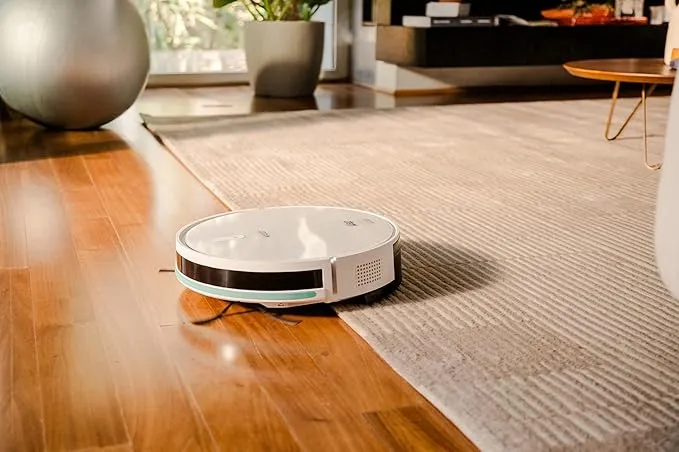
Which to Choose: Decision Guide
Time for the final decision! I'll help you with a practical guide based on different profiles and needs. To complement your home organization, also check out our refrigerator organization tips.
Choose a Traditional Vacuum If
- ✅ You have a limited budget (under $400)
- ✅ Your home is large (over 1,500 sq ft)
- ✅ You have many thick carpets and rugs
- ✅ You need to clean multiple surfaces (curtains, upholstery, car)
- ✅ You like having total control over cleaning
- ✅ You do concentrated weekly cleaning
- ✅ You have stairs and many obstacles
Specific recommendation: Look for reliable models with good suction power and versatile attachments.
Choose a Robot Vacuum If
- ✅ Your routine is very busy
- ✅ You live in an apartment or small/medium home
- ✅ You want daily automated cleaning
- ✅ You have hard floors and low-pile carpets
- ✅ You value convenience above all
- ✅ You enjoy technology and automation
- ✅ You have small children (always clean floors)
Specific recommendation: Start with an intermediate model that offers good mapping and app control features.
The "Best of Both Worlds" Option
Many people are choosing to have both types:
- Robot vacuum: for daily maintenance
- Traditional vacuum: for weekly deep cleaning
This combination offers the best of both worlds but obviously requires a larger investment.
Specific Scenarios
Family with babies/small children: → Robot vacuum (constant cleaning is essential)
Home with pets that shed a lot: → Powerful traditional vacuum + robot for maintenance
Single person apartment with busy schedule: → Robot vacuum without question
Large house with multiple floor types: → Traditional vacuum (more versatility)
Person allergic to dust: → Robot with HEPA filter (frequent cleaning is fundamental)
For those interested in creating a comfortable living space, consider pairing your cleaning solution with a quality sofa for relaxing after your cleaning routine is automated.
Conclusion: Which Is Really Better?
After analyzing all aspects, the answer is: it depends on your lifestyle. There's no universally correct choice.
If I had to summarize each option in one sentence:
Traditional Vacuum: More powerful, versatile, and durable, but requires your time and energy.
Robot Vacuum: Less powerful, but incredibly practical and keeps the house clean effortlessly.
For most people living in apartments or small/medium homes, with busy routines and predominantly hard floors, I'd recommend starting with an intermediate-category robot vacuum. The daily convenience outweighs the limitations.
For large homes, with many carpets, or people who insist on weekly deep cleaning, the traditional vacuum is still the best choice.
Remember: whatever your choice, the important thing is having a cleaning ally that fits your reality. A clean home contributes significantly to the well-being and quality of life of the whole family.
Final tip: If possible, test before buying or start with an entry-level model to evaluate if the chosen type meets your expectations. The ideal cleaning is one that happens consistently, whether manual or automated!
Whether you're interested in maintaining your entire home environment, you might also want to explore tips for saving electricity at home and learn about appliance energy consumption to make informed decisions about all your household devices.
